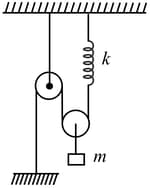Constrained Motion
Important Questions on Constrained Motion
A light string goes over a frictionless polley. At its one end hangs a mass of and at the other end hangs a mass of . Both the masses are supported by hands to keep them at rest. When the masses are released, they being to move and the string gets taut. (Take ) The tension in the string during the motion of the masses is :
Two smooth rings and are connected by a string. Another string connects Ring and block, if strings are tight then at the given moment :
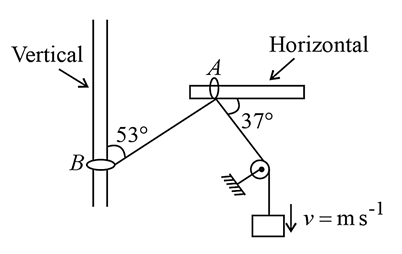
Acceleration (with respect to ground) of pulleys and blocks are as shown in the figure. All pulleys and strings are massless and frictionless than the magnitude of and are:
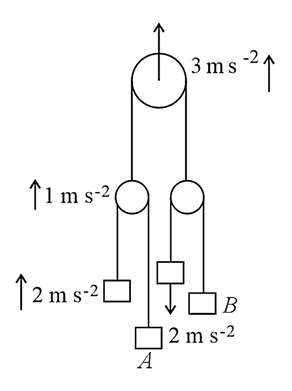
A block of mass lies on wedge of mass which lies on fixed horizontal surface. The wedge is free to move on the horizontal surface. A horizontal force of magnitude is applied on block as shown, neglecting friction at all surfaces, the value of force such that block has no relative motion w.r.t. wedge will be : (where is acceleration due to gravity)
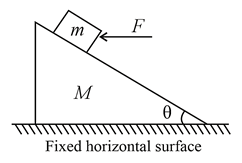
In the given figure, inclined surface and pulleys are smooth. Strings and pulleys are massless. Acceleration of mass is
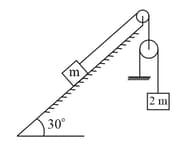
In the figure shown acceleration of monkey relative to the rope if it exerts a force of on string will be
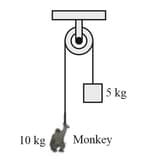
Figure shows a ladder hanging from a string that is connected with a ceiling and is having a spring balance connected in between. A boy of mass is climbing up the ladder at acceleration . Assuming the spring balance and the string to be massless and the spring to show a constant reading, the reading of the spring balance is (take )

Same spring is attached with and blocks in three different cases as shown in figure. If and be the extensions in the spring in these cases then (Assume all the blocks to move with uniform acceleration)
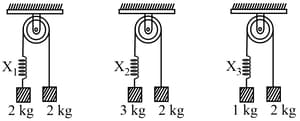
Mass shown in figure is in equilibrium. If it is displaced further by and released find its acceleration just after it is released. Take pulleys to be light and smooth and strings light.
